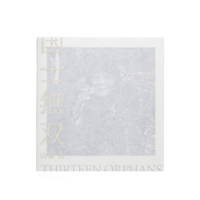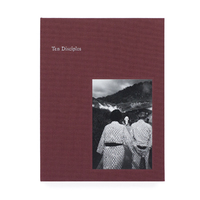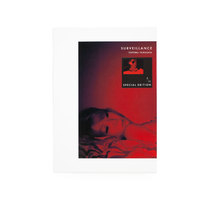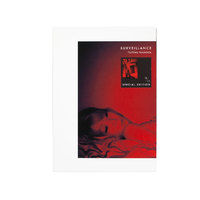Tsutomu Yamagata "THIRTEEN ORPHANS"
One day an old man in a plain suit sat next to me by a pond in a park. He began to put powder on his face and changed into a womanʼs long-sleeved Kimono. He started dancing to an enka ‒ a Japanese popular ballad ‒ that came over the radio cassette recorder, smiling all over his face. “Whatʼs going on?” I was curious. He was a master of Japanese dancing that he was a homosexual, and that he had cancer, he told me. Another day, I met an old millionaire in underwear who rode a clumsy bicycle, and yet another day, I met a devilishlooking man who in fact was a motherʼs boy. The park is Ueno Park (Tokyo) and the pond is a big lotus pond called Shinobazunoike. As I went there more often, I met more people like them. Before long, I began to take photographs of them and listen more to their stories.
There is something about the people I met at the park that peculiarly attracts me, something more than just how they look, just what they say about themselves. It is as if they had a kind of magnetic power, unseen and quiet, further attracting those who take a close look at them. What is it, this magnetic power, quietly striking a responsive chord in my heart, the heart of the one who directs his/her attention to them? How can I capture this power when I take photographs of those people? How can I express this power through my photography? In this work of portraits I pursue this problem.
When viewing a work of portraits, viewers want to know the identity of the subjects. When making and showing their works of portraits, photographers have utilized some types or categories to specify their subjects. August Sander showed his subjects under the categories of social stratum and occupation, and Diane Arbus focused on the deviant and marginalized people in the society. In addition, Hiroo Kikai continues photographing people with overwhelming presence. But those who became the models of my work do not go with such categorization. I go to the park earnestly and share time with the people who are there. Each model has his/her own background and character(s) so unique that no types, no categories can wrap them up or specify them. It is as if all sorts of mutually-conflicting and complex human characters ‒ vigor and weakness, harshness and gentleness, beauty and ugliness, and so forth ‒ all reveal themselves as they are in each person, and quietly create a magnetic power of his own, of her own. It is this power that I want to express, neither replaceable nor reducible, the one-and-only magnetic power of each. One after
another, I talked with the people and took their photographs, making their portraits one at a time. Thus I created this work. The work I named “The One and Only Existence.” And this work I will continue.
ーTsutomu Tamagata
有一天,我一個人坐在公園的池邊,旁邊坐了一個穿著西裝的男人。然而,男人突然開始在臉上化妝,換上有花紋圖樣的日本傳統女性和服。然後他開始演唱起傳統演歌,邊笑邊跳著舞。「這究竟是怎麼一回事?」,我忍不住自己好奇心的驅使下,開口詢問了他。他開始向我訴說本來是日本傳統舞蹈的專業舞者,也是個同性戀者,後來罹患了癌症等故事。另外有一天,我遇見了一位老富翁,只穿著內衣騎著破爛的䳾踏車。又有一天,我遇見一個長相可怕的男人,但實為一位媽寶的䫙䫊。在這個公園,東京的上野公園裡,有個䫓大的蓮花池塘,叫做不忍池。隨著在那邊逗留的機會越多,我越發結識了許多有趣的陌生人。在開始了聆聽每個人的故事這新習慣後,我也決定開始拍攝他們照片。
在公園裡遇見的各式各樣的人們,不知為什麼藏著各種不可思議的謎,超越他們的外表,也超越他們所言的種種,深深勾起我對他們的好奇。就像是他們都有看不見的,無聲的魔法般,當你注視著他們時,就會深深地被吸入。然而,究竟那是怎樣的魔力,能夠牽引著我內心的思線,讓我去注意他們,甚至去拍下他們的照片,而我又如何能捕捉這其中的力量,去表現這樣的思緒?透過這一系列的人像攝影作品,我試圖去解答上述這些疑問。
當觀看人像攝影作品時,我們往往會想知道更多關於照片裡的人是怎麼樣的「人」,當攝影師在拍攝以及展示照片的過程,其實已往往不經意地採用了某些特定的類型分類了被拍攝的對象。奧古斯特・桑德(August Sander)將被拍攝者依據其階級和職業分類,而黛安・阿勃絲(Diane Arbus )則將重心放在脫離社會常軌的,遊走邊緣的特異族群。除此之外,日本攝影師鬼海弘雄則是由任人各自本身的壓倒性存在感而直接拍攝。然而,在我的作品裡被攝影的模特兒並未存在任何上述的規範。我往往只是隻身前往公園,和那邊的人們一起共渡所有的時間,聽他們說話。每個人都有各自本來的經歷和個性,並且是獨一無二的,如何去將他們一一分類或是歸於什麼類別,依據什麼樣的特徵等等,對我而言都是無法的。就好比說,所有複雜的人間性質,不論是強壯的,孱弱的,嚴謹的,優柔的,美的,醜的等等全部,都直白地顯現在每個人本身有的樣子上,靜靜地將一個人有特有的魔力就那樣突顯出來。而我,想將這樣的力量呈現出來,那些原本的,不可被取代的被減少任何一點的,獨一無二的。在聽過每個人的訴說後,我為他們拍攝一人一張獨一無二的肖像照片。而這也是為什麼我將此作品命名為「國士無雙」。當然,我將會持續這個作品的創作。
ー山縣勉
-
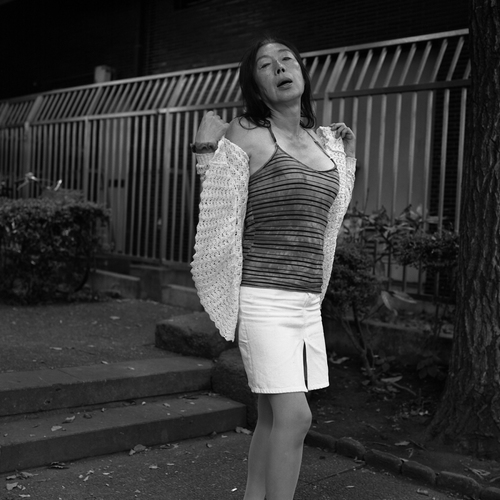 THIRTEEN ORPHANS ©Tsutomu Yamagata
THIRTEEN ORPHANS ©Tsutomu Yamagata -
 THIRTEEN ORPHANS ©Tsutomu Yamagata
THIRTEEN ORPHANS ©Tsutomu Yamagata -
 THIRTEEN ORPHANS ©Tsutomu Yamagata
THIRTEEN ORPHANS ©Tsutomu Yamagata

